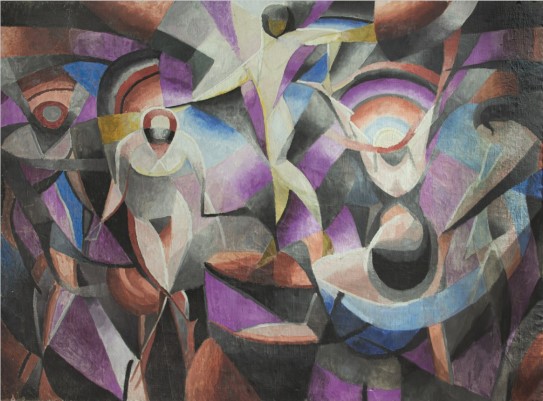Pioneering Cubism
Thorvald Hellesen
Transcription
Lin Stafne-Pfisterer
Picasso and Braque revolutionised the representation of reality. Subject matter was strongly abstracted and depicted from different angles simultaneously…
Narrator
This is Lin Stafne-Pfisterer, art historian at The National Museum
Lin Stafne-Pfisterer
When Hellesen moved to Paris in 1911, in the years before and during the First World War, he joined the circles congregating around Picasso, Georges Braque and Fernand Léger, amongst others – all Cubists who upturned the norms for what art should be.
Hellesen experimented with one Cubist expression to another. As soon as he mastered the principals of one direction, he seemed to abandon it abruptly and delve into a new direction. In just a few years, he explored…
Orphism - the interest of exploring how to transfer multi-sensory experiences of light, sound, colour and movement to canvas
…and…
Crystal Cubism - which used the logic of paper collage - where each field is painted with its own type of brushstroke and texture
…and…
Machine Cubism - which was inspired by an increasingly more mechanised life filled with assembly lines, cars, airplanes, etc…
Narrator
After the First World War, Hellesen experienced a kind of breakthrough. He participated in the most important Cubist exhibitions in Paris alongside his friend Fernand Leger, and exhibited both in and outside France.
Lin Stafne-Pfisterer
His works were reproduced in journals, and highlighted by several critics. One of which stated that Hellesen’s colourful pictures constituted an ‘unmistakably Nordic influence’ on ‘colourless’ French Cubists.